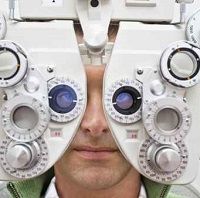UVEDAI Scale Debuts for Rating Uveitis
Researchers concerned about inconsistencies in rating disease activity in uveitis have come up with a new scoring system called UVEDAI.

Researchers working to develop a disease activity score for uveitis have created UVEDAI, a classification system based on ocular inflammatory activity. David Diaz-Valle, MD, PhD, of the Rheumatology and Ophthalmology Departments at the Hospital Clinic San Carlos in Madrid, Spain, presented UVEDAI in a poster at the annual meeting of the American Academy of Ophthalmology in Chicago, IL, in October 2016.
The researchers contend that current criteria are limited an add that “there is “great variability among studies.” Additionally, they say, “Standardized and validated outcome measures are lacking in uveitis management.” Their purpose in completing this multicenter, cross-sectional study was to “develop a disease activity index for patients with uveitis,” they say, as well as “to determine its discriminating ability to classify patients based on the level of activity.”
The researchers describe the primary endpoint as being “inflammatory uveitis activity defined as any intraocular inflammation, and categorized as mild, moderate and severe at the discretion of the ophthalmologist.” They identified seven dimensions and 14 items through the use of “a two-rounds Delphi questionnaire,” they say. They evaluated 195 patients in the study, and found 37% had mild inflammatory activity, 48% moderate, and 13% severe.
The seven dimensions include: inflammation of the anterior chamber cell grade of 1-4+, vitreous haze assessed using the Nussenblatt scale, macular edema, inflammation of the posterior pole measured by vessel sheathing, chorio-retinal lesions, and papillitis, and a global assessment including patient and physician. Scores from these dimensions determine whether the inflammatory activity is mild, moderate or severe.
The researchers conclude that “UVEDAI is the first ocular composite score that assesses and classifies global ocular inflammatory activity with high discriminatory power,” and that “it is an easy-to-use index because it is based on variables commonly used in clinical practice for uveitis assessment.”
Related Coverage:
Golimumab Effective Against Uveitis Associated with Ankylosing Spondylitis